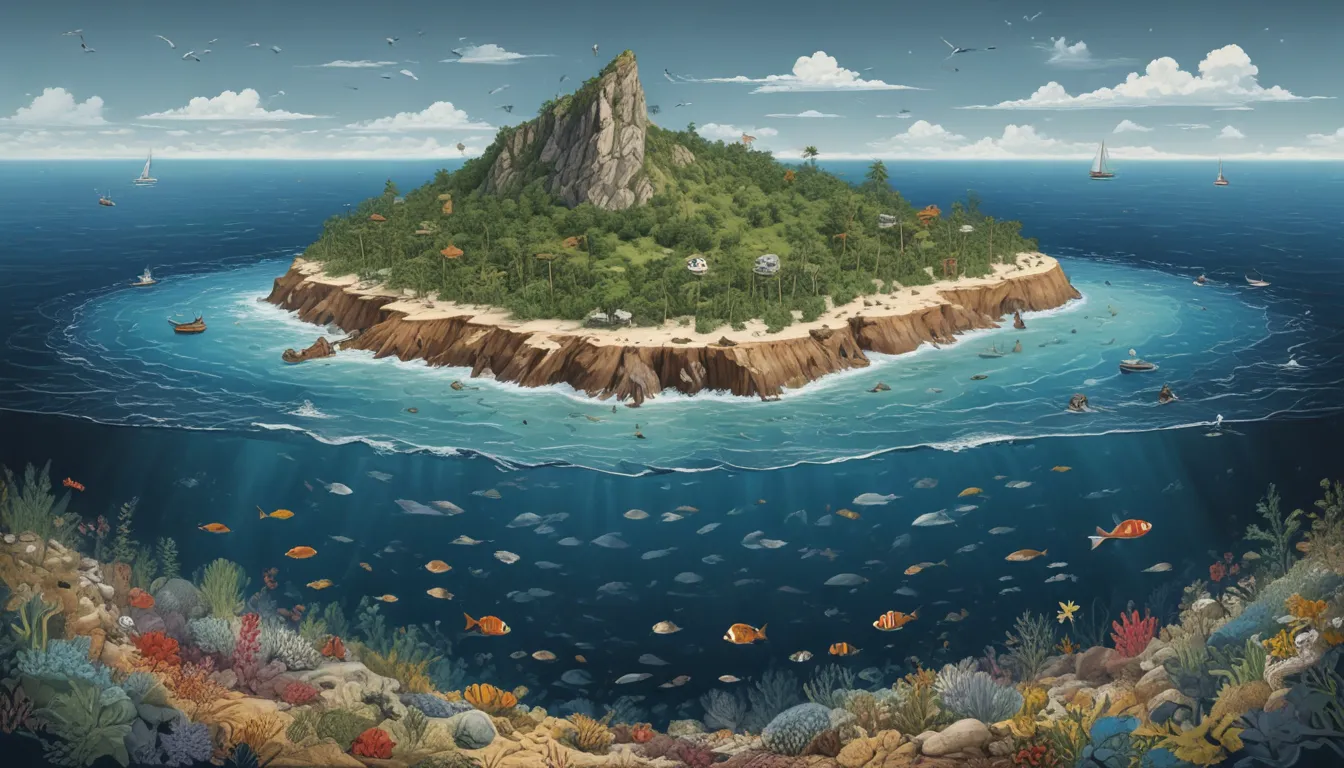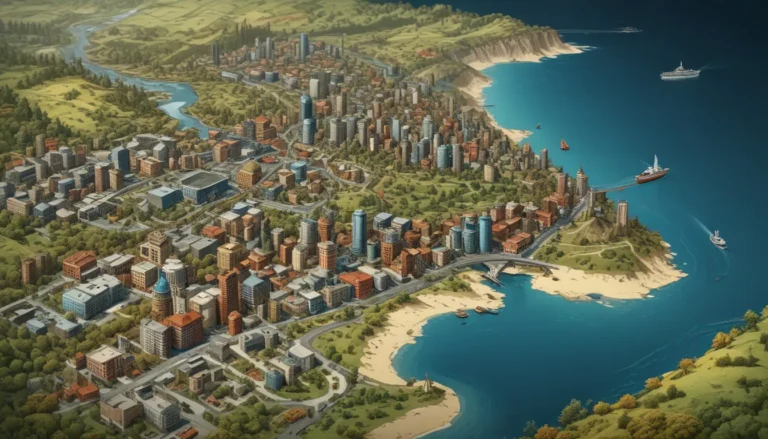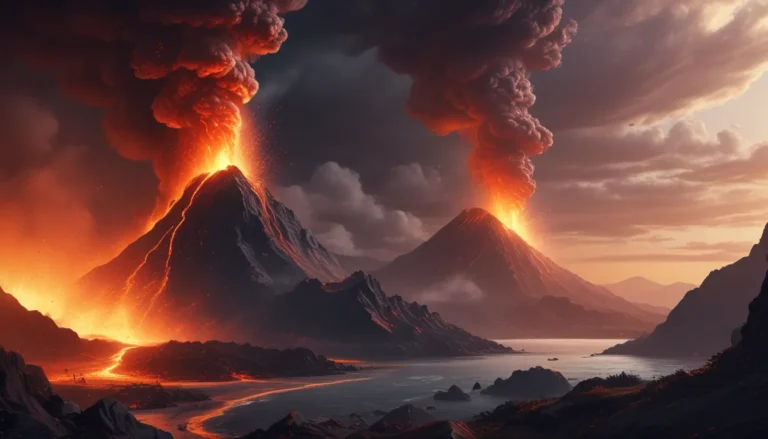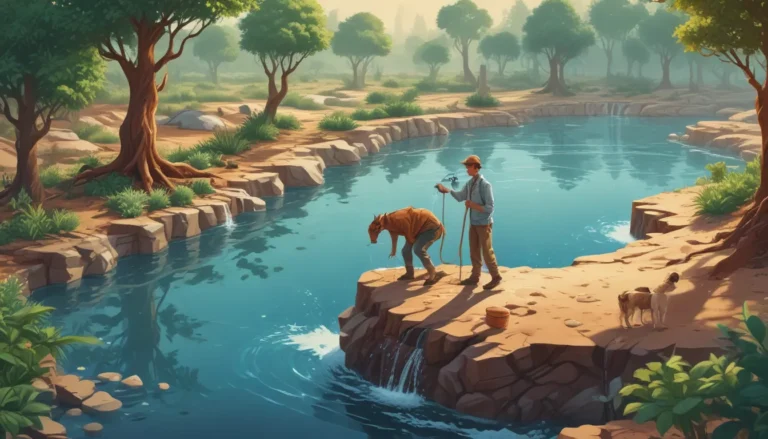A Note About Images: The images used in our articles are for illustration purposes only and may not exactly match the content. They are meant to engage readers, but the text should be relied upon for accurate information.
The continental shelf is a remarkable geological feature that envelops our continents and influences various aspects of our planet and human activities. In this article, we will unveil 19 extraordinary facts about the continental shelf that will unveil its secrets and showcase its importance in our world. Join us on a journey beneath the waves to discover the wonders of this vast underwater landscape.
Key Takeaways:
- The continental shelf is a vast underwater area with diverse ecosystems, valuable resources, and historical treasures, playing a crucial role in our planet’s geography and climate patterns.
- It supports marine life, provides economic opportunities, and holds clues to Earth’s history, making it a fascinating and important feature of our planet’s geography.
Unveiling the Continental Shelf:
Imagine a world beneath the ocean’s surface, where the continents extend their reach into the depths, creating a transition zone known as the continental shelf. This submerged portion of the continents plays a vital role in shaping our planet and facilitating a variety of human activities. Let’s delve deeper into the intriguing world of the continental shelf and uncover the mysteries that lie within.
What is the continental shelf?
The continental shelf is an extension of a continent that lies beneath the ocean’s surface, acting as a bridge between the shallows near the coast and the deeper waters further offshore. It is a vast underwater area that holds many surprises and wonders waiting to be discovered.
Unveiling the Vastness:
Spanning approximately 7.5% of the world’s oceans, the continental shelf covers over 30 million square kilometers of underwater terrain. Despite its immense size, the width of continental shelves can vary significantly from region to region, ranging from a few kilometers to hundreds of kilometers.
Diverse Ecosystems:
Beneath the waves of the continental shelf, a rich and diverse ecosystem thrives, teeming with a vast array of marine organisms. From fish and corals to mollusks and crustaceans, the continental shelf serves as a vital breeding ground and nursery for countless species, contributing to the biodiversity of our oceans.
Gateway to Exploration:
The continental shelf serves as a platform for exploration and discovery, providing opportunities for marine transportation, resource extraction, and scientific research. It is a treasure trove of valuable natural resources, including oil, gas, minerals, and renewable energy sources like wind and tidal power.
Uncovering Unique Features:
As we journey further into the depths of the continental shelf, we encounter a diverse range of features and phenomena that add to its allure and significance. From underwater canyons to ancient archaeological sites, the continental shelf holds a wealth of surprises waiting to be unearthed.
Delving into Geological Origins:
The continental shelf was formed over millions of years through a complex interplay of geological processes such as sedimentation, erosion, and tectonic activity. This gradual shaping of the underwater landscape has resulted in the creation of unique features like the shelf break, where the continental shelf meets the steeper continental slope.
Underwater Marvels:
Deep and narrow submarine canyons carve through the continental shelf, shaped by currents and erosion over time. These underwater wonders provide a glimpse into the dynamic forces at work beneath the waves, showcasing the ever-changing nature of the continental shelf.
Biodiversity Hotspots:
One of the most famous examples of the continental shelf’s ecological significance is the Great Barrier Reef off the coast of Australia. This biodiverse region is a testament to the rich marine life that thrives on the continental shelf, highlighting the importance of this underwater habitat in preserving our planet’s biodiversity.
Cultural and Historical Significance:
Submerged archaeological sites on the continental shelf offer valuable insights into the history of human civilization and provide a window into the past. These hidden treasures beneath the waves reveal the ancient connections between land and sea, painting a vivid picture of our shared heritage.
Impact and Significance:
The continental shelf’s influence extends beyond its physical boundaries, shaping global climate patterns, supporting economies, and providing protection against natural disasters. Its ecological, economic, and scientific significance make it a focal point of study and exploration, driving our understanding of the interconnectedness between land and sea.
Economic Opportunities:
The wealth of resources found on the continental shelf, including fisheries, oil and gas reserves, and minerals, play a significant role in the economies of coastal nations. Industries such as fishing, tourism, and energy production rely on the resources provided by the continental shelf, contributing to economic growth and development.
Environmental Importance:
The delicate ecosystems of the continental shelf are vulnerable to human activities such as pollution, overfishing, and climate change, which can have detrimental effects on marine life and biodiversity. Conservation efforts are essential to protect these valuable habitats and ensure their preservation for future generations.
Climate Connections:
The continental shelf plays a vital role in the exchange of heat and nutrients between the ocean and the atmosphere, influencing global climate patterns. Understanding these interactions is critical for predicting and mitigating the effects of climate change on our planet’s oceans and ecosystems.
Conclusion: Journey into Discovery
As we conclude our exploration of the extraordinary facts about the continental shelf, we are left with a profound appreciation for this fascinating geological feature and its impact on our world. From its ecological diversity to its economic significance, the continental shelf continues to amaze and inspire us with its wonders. Let us continue to study, explore, and protect this valuable landscape, recognizing the intricate balance between land and sea that shapes our planet’s future.
FAQs: Delving Deeper
- Q: What is a continental shelf?
- A: The continental shelf is the extended portion of a continent that lies beneath the coastal waters, characterized by shallow depths and gradual slopes.
- Q: How is a continental shelf formed?
- A: Continental shelves are formed through processes such as tectonic activity, erosion, and sea level changes over millions of years.
- Q: What is the average width of a continental shelf?
- A: The average width of a continental shelf is around 80 kilometers, but this can vary widely depending on the location and geological factors.
- Q: What types of organisms can be found on the continental shelf?
- A: The continental shelf is home to a diverse range of marine life, including fish, corals, crustaceans, and various species of plankton.
- Q: How is the continental shelf important for human activities?
- A: The continental shelf is a valuable resource for activities such as fishing, oil and gas exploration, and mineral extraction. It also provides opportunities for tourism and recreation.
- Q: Are all continental shelves the same?
- A: No, continental shelves can vary in width, depth, and composition depending on factors such as geological history, proximity to land, and ocean currents.
- Q: Can the continental shelf change over time?
- A: Yes, the shape and extent of continental shelves can change due to factors such as sea level fluctuations, sediment deposition, and geological processes.
Embark on a journey of discovery and wonder as you explore the depths of the continental shelf, uncovering its secrets and significance in our world. From ancient civilizations to thriving ecosystems, the continental shelf holds a treasure trove of mysteries waiting to be revealed. Join us in celebrating this remarkable feature of our planet’s geography and the interconnectedness of land and sea that shapes our world’s oceans.






